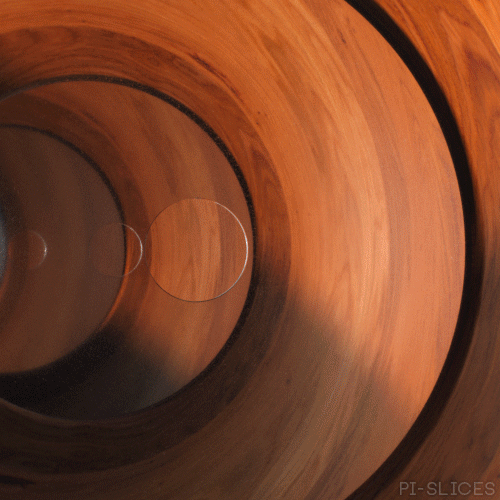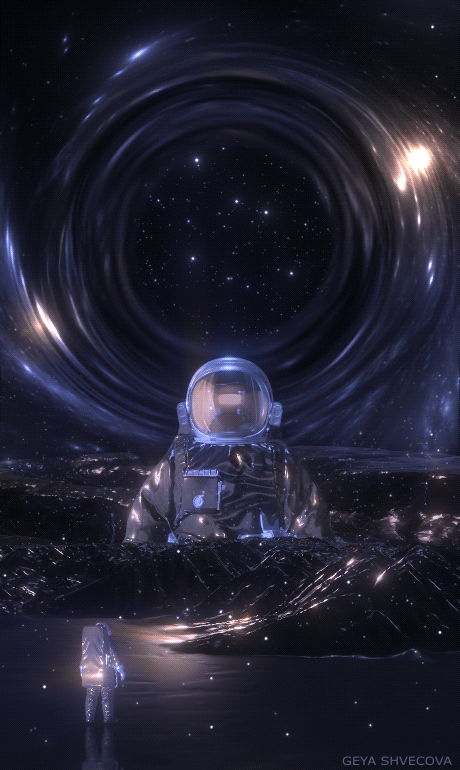By Artist Marc Simonetti.

By artist Marc Simonetti.
More Posts from Epic-flight and Others

Rainbow Mountains - 210526

Circular Windows - 221006

A 1979 work by space artist Don Dixon shows dwarf planet Pluto as seen from one of its moons. (Cosmographica)

An image of Jupiter taken by NASA's Hubble Space Telescope in ultraviolet, visible, and near-infrared light on Aug. 25, 2020, is giving researchers an entirely new view of the giant planet and offers insights into the altitude and distribution of the planet's haze and particles. This complements Hubble’s visible-light pictures that show the ever-changing cloud patterns. In this photo, the parts of Jupiter’s atmosphere that are at higher altitude, especially over the poles, look red from atmospheric particles absorbing ultraviolet light. Conversely, the blue-hued areas represent the ultraviolet light being reflected off the planet. A new storm at upper left, which erupted on Aug. 18, 2020, is grabbing the attention of scientists in this image. The “clumps” trailing the white plume appear to be absorbing ultraviolet light, similar to the center of the Great Red Spot, and Red Spot Jr. directly below it. This provides researchers with more evidence that this storm may last longer on Jupiter than most storms.
Credits: NASA, ESA, STScI, A. Simon (Goddard Space Flight Center), M.H. Wong (University of California, Berkeley), and the OPAL team

Another oldie from my draft folder. I’d like to do a mass deletion of 99% of my unposted drafts.

Rick Sternbach, 1976

Charon, moon of Pluto, observed by NASA's New Horizons probe just before closest approach on this day in 2015. (It flew within 12,500 km of Pluto and as close as 27,000 km to Charon.)



Design graphics Geya Shvecova (Jump into the void) Archive_020920

Flash Forward.
Twitter / Instagram / Gumroad / Patreon
KnownOrigin / SuperRare / Zedge
-
 epic-flight reblogged this · 4 years ago
epic-flight reblogged this · 4 years ago -
 aimlessandroiddreamer reblogged this · 6 years ago
aimlessandroiddreamer reblogged this · 6 years ago -
 jackiestone liked this · 8 years ago
jackiestone liked this · 8 years ago -
 maziarz8m773 liked this · 8 years ago
maziarz8m773 liked this · 8 years ago -
 shots-of-daydream-fuel reblogged this · 8 years ago
shots-of-daydream-fuel reblogged this · 8 years ago -
 kuntzercarlos-blog liked this · 8 years ago
kuntzercarlos-blog liked this · 8 years ago -
 rolarren-blog liked this · 8 years ago
rolarren-blog liked this · 8 years ago -
 thenotsogoodtwin liked this · 8 years ago
thenotsogoodtwin liked this · 8 years ago -
 thedreadpirateratchet reblogged this · 8 years ago
thedreadpirateratchet reblogged this · 8 years ago -
 headlesssamurai liked this · 8 years ago
headlesssamurai liked this · 8 years ago -
 o2445 liked this · 8 years ago
o2445 liked this · 8 years ago -
 andywinds liked this · 9 years ago
andywinds liked this · 9 years ago -
 vanogangee reblogged this · 9 years ago
vanogangee reblogged this · 9 years ago -
 dirtus-daniel liked this · 9 years ago
dirtus-daniel liked this · 9 years ago -
 justconceptart-blog reblogged this · 9 years ago
justconceptart-blog reblogged this · 9 years ago -
 thestonedspaniard reblogged this · 9 years ago
thestonedspaniard reblogged this · 9 years ago -
 thestonedspaniard liked this · 9 years ago
thestonedspaniard liked this · 9 years ago -
 mildalcoholic liked this · 9 years ago
mildalcoholic liked this · 9 years ago -
 dmonscape reblogged this · 9 years ago
dmonscape reblogged this · 9 years ago -
 vampiredemon666 liked this · 9 years ago
vampiredemon666 liked this · 9 years ago -
 alicestark liked this · 9 years ago
alicestark liked this · 9 years ago -
 thrauhrafn reblogged this · 9 years ago
thrauhrafn reblogged this · 9 years ago -
 concept-art-collection-blog reblogged this · 9 years ago
concept-art-collection-blog reblogged this · 9 years ago -
 versacemybody reblogged this · 9 years ago
versacemybody reblogged this · 9 years ago -
 1998alexandr liked this · 9 years ago
1998alexandr liked this · 9 years ago -
 thewolf-at-the-door reblogged this · 9 years ago
thewolf-at-the-door reblogged this · 9 years ago -
 handsapt reblogged this · 9 years ago
handsapt reblogged this · 9 years ago -
 nalila9632 liked this · 9 years ago
nalila9632 liked this · 9 years ago -
 handsapt liked this · 9 years ago
handsapt liked this · 9 years ago -
 shakespere-zen liked this · 9 years ago
shakespere-zen liked this · 9 years ago -
 athatyouknow liked this · 9 years ago
athatyouknow liked this · 9 years ago -
 welcometotheplace reblogged this · 9 years ago
welcometotheplace reblogged this · 9 years ago -
 ragingthisone liked this · 9 years ago
ragingthisone liked this · 9 years ago -
 thometheus liked this · 9 years ago
thometheus liked this · 9 years ago -
 ca314159bara liked this · 9 years ago
ca314159bara liked this · 9 years ago -
 mariinaabad-blog liked this · 9 years ago
mariinaabad-blog liked this · 9 years ago -
 wayofthesword liked this · 9 years ago
wayofthesword liked this · 9 years ago -
 codiwan reblogged this · 9 years ago
codiwan reblogged this · 9 years ago -
 apocryphist reblogged this · 9 years ago
apocryphist reblogged this · 9 years ago

